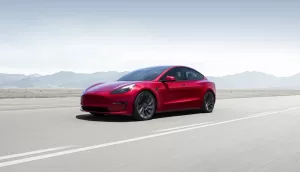Mark August 11: Ford’s Budget EV Plans Poised to Disrupt the Market

- Ford plans to launch an electric vehicle retailing under $30,000, thus considered a mass-market Asian.”
- If anything, the August 11 announcement could serve to shake things up regarding how the average global consumer views electric life.
Ford Motor Company, one of the most globally recognised automotive brands, is preparing to redefine its presence in the electric vehicle (EV) sector. On August 11, Ford will finally make an announcement with a detailed unveiling of the low-cost EV platform – a sign, maybe, of an intentional shift as to what it wants to do toward fulfilling global mobility needs.
Over 100 years of rich legacy, Ford forged the path towards transforming automobile ownership from a twentieth-century luxury to an everyday utility. The company introduced mass production to the world through the Model T and has always stood for engineering for the people. Today, Ford does business in more than 100 countries and produces millions of vehicles every year.
Nonetheless, the international path of Ford towards electrification was burdened with challenges. High development costs, slow returns, and even competition coming from tech-oriented startups, such as Tesla, have somewhat forced legacy automakers to revisit their EV playbooks. Ford’s latest kangaroo appears to be born out of these pressures and is, in a calculated way, betting that disarming competition through affordability, instead of disarming with feature upgrades, will carry the next wave of EV growth.
CEO Jim Farley has stated publicly that Ford has established a small, focused internal team, independent of its existing EV division, tasked solely with developing budget-friendly electric vehicles. This team began working in 2022 and is reportedly composed of experts drawn from startups, software firms, and core auto engineering. Their goal: deliver a vehicle with pricing that rivals Chinese players while maintaining Ford’s brand trust and service network.
A New Proposition for Global Drivers
Electric vehicles are growing in popularity worldwide, but many consumers still view them as out of reach. In key markets across Europe, North America, Asia, and Latin America, the average EV remains significantly more expensive than its internal combustion counterpart. While it is broadly accepted that EVs cost more upfront, specific global averages like $53,000 for EVs and $30,000 for petrol vehicles attributed to BloombergNEF are unverified. The general affordability gap, however, is widely acknowledged by industry analysts.
Ford’s effort to release an EV priced under $30,000 (or equivalent in local currencies) directly targets this affordability gap. This would place it in direct competition with entry-level models from BYD, MG Motor, and Renault.
The move has wide implications for buyers in emerging markets where EV adoption has lagged due to price sensitivity. In regions where public transport remains dominant and car ownership is aspirational, a reliable electric vehicle at this price point could change how mobility is perceived and accessed.
The likely trade-off comes in battery technology. Ford is expected to use lithium iron phosphate (LFP) batteries, which are less expensive but have a shorter range than more advanced chemistries. Early indicators suggest the new model may offer around 320 kilometres (approximately 200 miles) of range per charge, sufficient for daily use but modest compared to premium EVs. This figure aligns with industry norms for vehicles using LFP chemistry.
Reimagining Ford’s Brand in the Electric Age
This initiative is more than a cost-saving strategy. It represents a broader redefinition of the Ford brand.
Over the past decade, Ford has introduced high-profile electric offerings like the Mustang Mach-E and the F-150 Lightning. These vehicles are priced in a premium range and offer advanced features, targeting a higher-income demographic, particularly in North America.
By contrast, the new low-cost EV positions Ford as a company that still understands its historical role: building for the everyday user. It reconnects Ford to the values of reliability, affordability, and usefulness. In doing so, it also challenges the tech-centric narrative that has dominated the EV market.
Rather than leading with acceleration stats or autonomous features, Ford appears to be leading with real-world practicality. This recalibration could help the brand compete more effectively across markets where customers are less interested in luxury and more focused on durability and long-term value.
Global Market Reactions and Strategic Impact
If Ford delivers a viable electric vehicle at this price point, the ripple effects across the global auto industry could be substantial.
Tesla, whose Model 3 base price varies by region but typically exceeds $38,000 in most markets, may face increased pressure to reduce costs or introduce new models. European brands such as Renault, Peugeot, and Volkswagen have all signalled intentions to launch affordable EVs, although few have firm release timelines. Chinese automakers, who already offer low-cost models like the BYD Dolphin or Wuling Air EV in Asia and Latin America, may accelerate global expansion plans.
The shift could also challenge how automakers prioritise innovation. Instead of introducing features like hands-free driving or AI-enabled navigation, manufacturers might redirect focus toward localisation, simplified engineering, and manufacturing scale.
Battery suppliers, charging infrastructure companies, and software providers will need to adapt, too. Cost-sensitive models mean new supply chain demands, reduced margins, and a push for interoperable platforms that can serve markets across income brackets.
What We Might Learn on August 11
Ford has been tight-lipped about the full scope of the announcement, but industry sources expect several key elements to be revealed:
- Technical specs, including battery type, powertrain layout, and efficiency ratings
- A baseline price for major global regions
- Target manufacturing hubs and supply chain strategies
- Projected rollout schedule for North America, Europe, Asia, and Latin America
While some sources suggest early production could occur in Mexico and the southern United States, Ford has confirmed manufacturing at its Louisville Assembly Plant in Kentucky for an upcoming EV. Any claims about expansion into India or Southeast Asia are unverified at this time and should be treated as speculative.
Aligning With Consumer Expectations Worldwide
Consumers across the globe are increasingly demanding transparency, affordability, and accountability from carmakers. The luxury wave of EVs has helped build awareness, but adoption remains constrained by economic realities.
Ford’s pivot speaks directly to that frustration. By focusing on price and practical use cases, it acknowledges that electrification must include a wider demographic to succeed. That includes students in Southeast Asia, working professionals in South America, and rural families in Africa.
Accessibility is becoming the defining issue of EV adoption. Ford’s budget EV project is a direct response to that issue, not just in rhetoric but in execution. If done right, it could redefine what the “electric revolution” really means.
What This Means for the Broader Industry
Success in this space could force a reckoning within the auto sector. Legacy brands may need to choose between protecting margins and growing market share. Tech firms with limited manufacturing experience might struggle to adapt to a price-first approach. Meanwhile, policymakers might recalibrate incentives to support entry-level EVs rather than premium models.
Investments could also shift. Instead of pouring capital into experimental software, manufacturers may focus on building scalable platforms, robust parts networks, and region-specific assembly plants. This would bring stability to a market that has often prioritised hype over long-term strategy.
More importantly, the conversation around EVs could shift in tone. Instead of asking “How fast does it charge?” or “Does it drive itself?”, consumers might start asking “Can I afford it?” and “Will it last me five years?”
Why You Should Pay Attention
For many buyers, Ford’s announcement will mark the first time an EV appears both credible and affordable. Whether you live in an urban centre or a smaller community, whether you’re a student, a professional, or a family planning your next vehicle purchase, this could open new doors.
It also sets a new baseline. If Ford succeeds, competitors will be forced to catch up. You can expect a wider range of options, stronger service ecosystems, and more brands competing for your attention, not with bells and whistles, but with reliability and price.
You don’t have to be an early adopter. You just have to be ready.
The August 11 reveal is not just another press event. It could be a landmark moment in the global EV timeline, where affordability meets scalability and where Ford begins to rebuild its legacy for a new era of drivers.
And for you, it might just be the right time to reconsider what your next car could be.









































